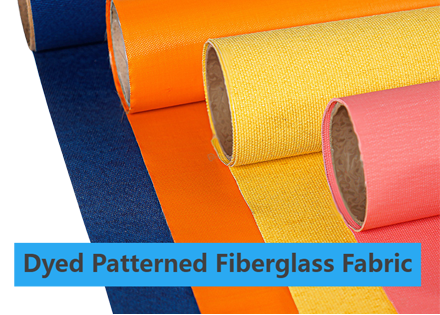

Dyed patterned fiberglass fabric is an advanced technical textile that combines aesthetic appeal with high-performance properties. This paper explores its key characteristics, including Class A fire resistance, vibrant color options, high-temperature tolerance, abrasion resistance, easy cutting and tailoring, flame retardancy and thermal insulation, and reduced skin irritation. Its applications span thermal insulation covers removable insulation jackets, welding chambers, fire blankets, and fire curtains.
- Fiberglass fabrics have long been valued for their durability and thermal resistance. Recent advancements in dyeing and patterning technologies have expanded their use in industries requiring both functionality and visual customization. This study examines the technical attributes of dyed patterned fiberglass fabrics, emphasizing their compliance with stringent safety and performance standards.
-2.1 Class A Fire Resistance (Non-Combustible)
The fabric meets ASTM E84/UL 723 Class A standards, ensuring non-combustibility and minimal smoke emission. This makes it ideal for high-risk environments such as welding zones and fire-prone industrial settings.
-2.2 Rich Color Options
Advanced disperse dyeing and pigment printing techniques enable a wide spectrum of colors without compromising fiber integrity. Unlike traditional fiberglass, which is typically limited to natural hues, this fabric allows for custom patterns and branding.
-2.3 High-Temperature Resistance
With a continuous service temperature of up to 550°C (1022°F) and intermittent tolerance beyond 700°C (1292°F), the fabric retains structural stability in extreme conditions. The inorganic fiber composition prevents melting or dripping.
-2.4 Superior Abrasion Resistance
Reinforced with silane-based coatings or PTFE (Polytetrafluoroethylene) treatments, the fabric exhibits enhanced durability against mechanical wear, extending its lifespan in high-friction applications.
-2.5 Easy Cutting and Tailoring
The fabric’s balanced weave structure allows clean cuts without excessive fraying, facilitating custom fabrication for insulation jackets and removable covers.
-2.6 Flame Retardancy and Thermal Insulation
In addition to inherent flame resistance, the fabric provides low thermal conductivity (0.03–0.05 W/m·K), making it effective for heat shielding in electrical and industrial applications.
-2.7 Reduced Skin Irritation
A specialized acrylic or silicone softener coating minimizes fiber shedding, reducing the itchiness commonly associated with traditional fiberglass fabrics.
-Thermal Insulation Covers: Protects pipelines, boilers, and industrial equipment. -Removable Insulation Jackets: Facilitates maintenance in HVAC and petrochemical systems.
-Welding Chambers: Acts as a spark barrier in metalworking environments.
-Fire Blankets Curtains: Complies with NFPA 701 and EN 1869 for emergency fire containment.
Dyed patterned fiberglass fabric represents a significant evolution in technical textiles, merging safety, functionality, and design flexibility. Its A-rated fire resistance, thermal stability, and user-friendly properties position it as a superior choice for demanding industrial and commercial applications.
Further studies could explore nanocoating enhancements for improved hydrophobicity and self-cleaning capabilities, as well as eco-friendly dyeing processes to reduce environmental impact.
2nd Floor, No. 2 Standard Workshop, Hengke Industrial Park Phase I,Ganzhou Economy and Technology Development Zone, Ganzhou City, Jiangxi Province, P.R. China
 赣公网安备36072402000211号
赣公网安备36072402000211号